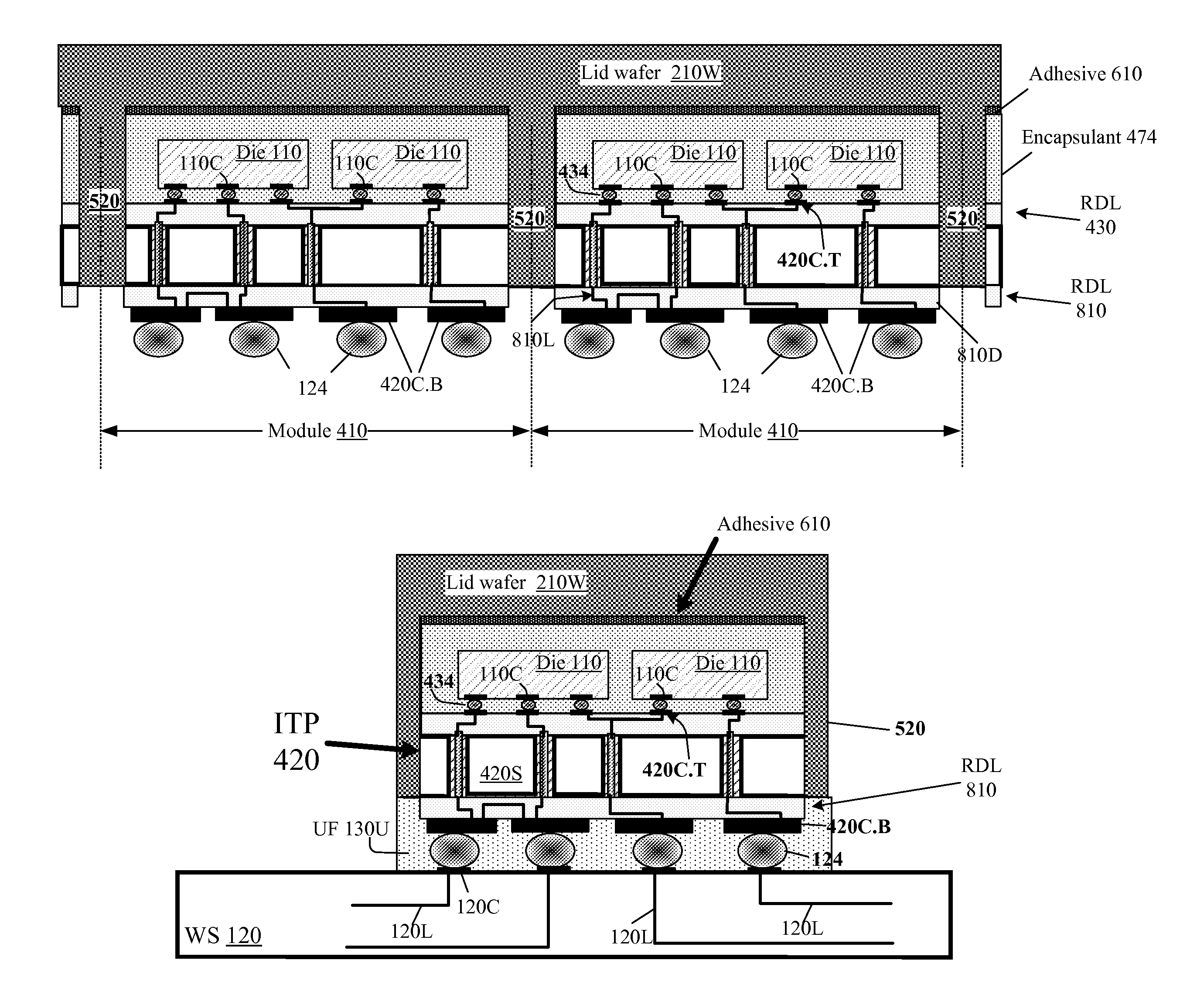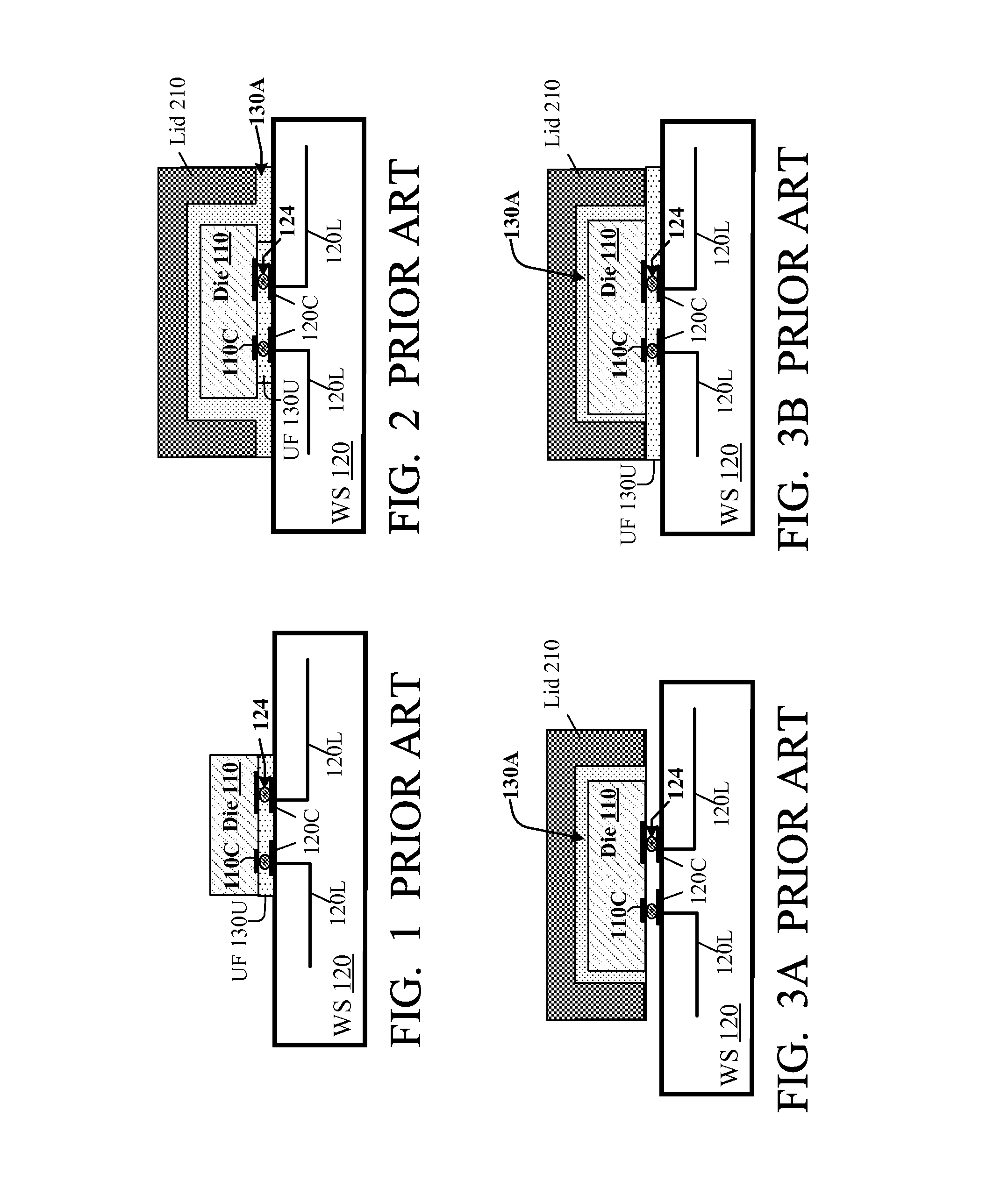Microelectronic assemblies with cavities, and methods of fabrication
a technology of microelectronic assemblies and cavities, applied in the direction of semiconductor devices, semiconductor/solid-state device details, electrical apparatus, etc., can solve the problems of cracking or detachment of connections, failure of microelectronic assemblies, and difficulty in connecting assemblies to other circuits
- Summary
- Abstract
- Description
- Claims
- Application Information
AI Technical Summary
Benefits of technology
Problems solved by technology
Method used
Image
Examples
Embodiment Construction
[0023]The embodiments described in this section illustrate but do not limit the invention. The invention is defined by the appended claims.
[0024]FIG. 4A illustrates early stages of fabrication of multichip modules 410 which of which contains a stack of die that will be capped by a lid according to some embodiments of the present invention. For illustration purposes, the figure shows multiple modules 410 fabricated in batch and later separated from each other. Modules 410 may have many different architectures, and for the sake of illustration each module 410 contains a stack of an interposer die 420 with two die 110 on top. Each interposer (ITP) 420 will have bottom contact pads attachable to other components, e.g. WS 120 of FIG. 1; these contact pads have not yet been formed. Thus, the die 110 will be connected to the WS or other components through the interposer rather than directly. The interposer can be used for various reasons. One reason is that sometimes the WS contact pads 12...
PUM
 Login to View More
Login to View More Abstract
Description
Claims
Application Information
 Login to View More
Login to View More - Generate Ideas
- Intellectual Property
- Life Sciences
- Materials
- Tech Scout
- Unparalleled Data Quality
- Higher Quality Content
- 60% Fewer Hallucinations
Browse by: Latest US Patents, China's latest patents, Technical Efficacy Thesaurus, Application Domain, Technology Topic, Popular Technical Reports.
© 2025 PatSnap. All rights reserved.Legal|Privacy policy|Modern Slavery Act Transparency Statement|Sitemap|About US| Contact US: help@patsnap.com



